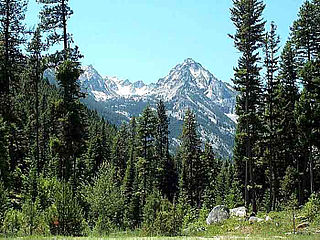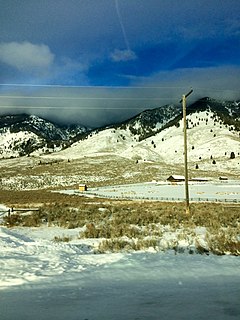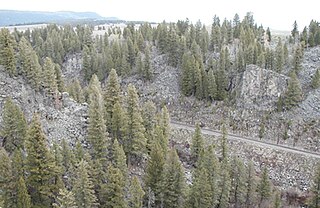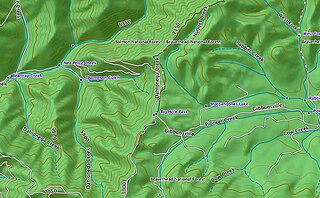| Meyers Fire | |
|---|---|
 Meyers Fire August 28, 2017 | |
| Location | Beaverhead-Deerlodge National Forest and Bitterroot National Forest, Montana, United States |
| Coordinates | 45°59′42″N113°34′48″W / 45.995°N 113.58°W [1] |
| Statistics | |
| Date(s) | Started July 17, 2017 5:21pm |
| Burned area | 62,034 acres (25,104 ha) |
| Cause | Lightning |
| Land use | Forest |
| Buildings destroyed | 0 |
| Fatalities | 0 |
| Non-fatal injuries | 0 |
The Meyers Fire burned in Beaverhead-Deerlodge National Forest and Bitterroot National Forest in the U.S. state of Montana and was first reported on July 17, 2017 at 5:21pm. Located approximately 25 mi (40 km) southwest of Phillipsburg, Montana, the Meyers Fire is a natural fire that was caused by lightning. As of September 28, 2017, it encompassed 62,034 acres (25,104 ha). [1] The Meyers Fire originated after a lightning storm passed over the region, starting a fire in remote terrain in Granite County, Montana within Beaverhead-Deerlodge National Forest. The fire then burned into neighboring Ravalli County, Montana and then crossed the continental divide into Beaverhead County, Montana and Deer Lodge County, Montana, where it entered Bitterroot National Forest. [1] By August 3, the Meyers and Whetstone Fires merged, with the name of the former being the official name of the event. [2] Due to a heavy fuel load, exceptionally dry conditions with high heat and periods of strong winds, the Meyers Fire had periods of explosive growth during August and early September, leading to evacuations of nearby communities. [1]

The Beaverhead-Deerlodge National Forest is the largest of the National Forests in Montana, United States. Covering 3.36 million acres (13,600 km2), the forest is broken into nine separate sections and stretches across eight counties in the southwestern area of the state. President Theodore Roosevelt named the two forests in 1908 and they were merged in 1996. Forest headquarters are located in Dillon, Montana. In Roosevelt's original legislation, the Deerlodge National Forest was called the Big Hole Forest Reserve. He created this reserve because the Anaconda Copper Mining Company, based in Butte, Montana, had begun to clearcut the upper Big Hole River watershed. The subsequent erosion, exacerbated by smoke pollution from the Anaconda smelter, was devastating the region. Ranchers and conservationists alike complained to Roosevelt, who made several trips to the area. (Munday 2001)

Bitterroot National Forest comprises 1.587 million acres (6,423 km²) in west-central Montana and eastern Idaho, of the United States. It is located primarily in Ravalli County, Montana, but also has acreage in Idaho County, Idaho (29.24%), and Missoula County, Montana (0.49%).

In the United States, a state is a constituent political entity, of which there are currently 50. Bound together in a political union, each state holds governmental jurisdiction over a separate and defined geographic territory and shares its sovereignty with the federal government. Due to this shared sovereignty, Americans are citizens both of the federal republic and of the state in which they reside. State citizenship and residency are flexible, and no government approval is required to move between states, except for persons restricted by certain types of court orders. Four states use the term commonwealth rather than state in their full official names.












